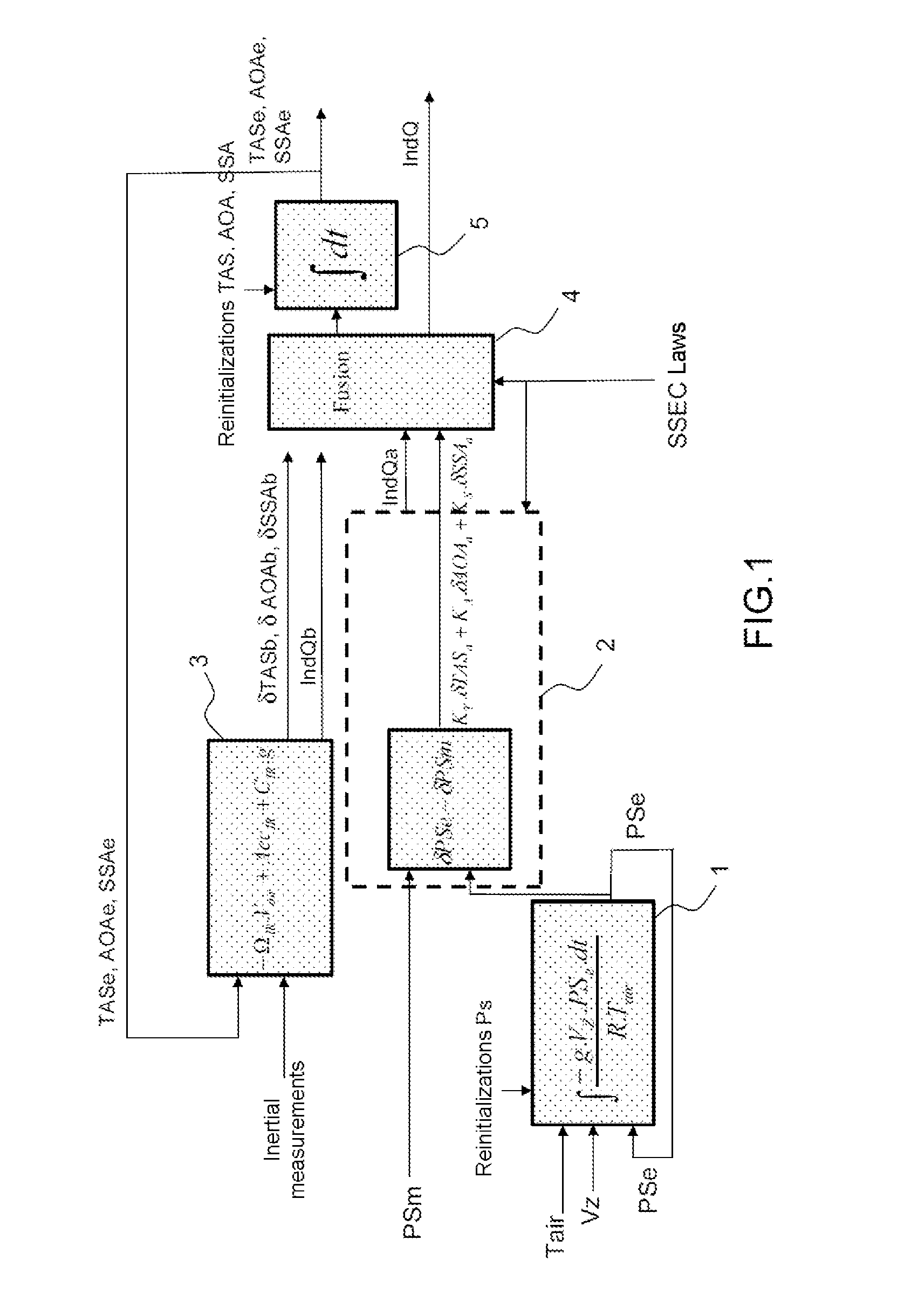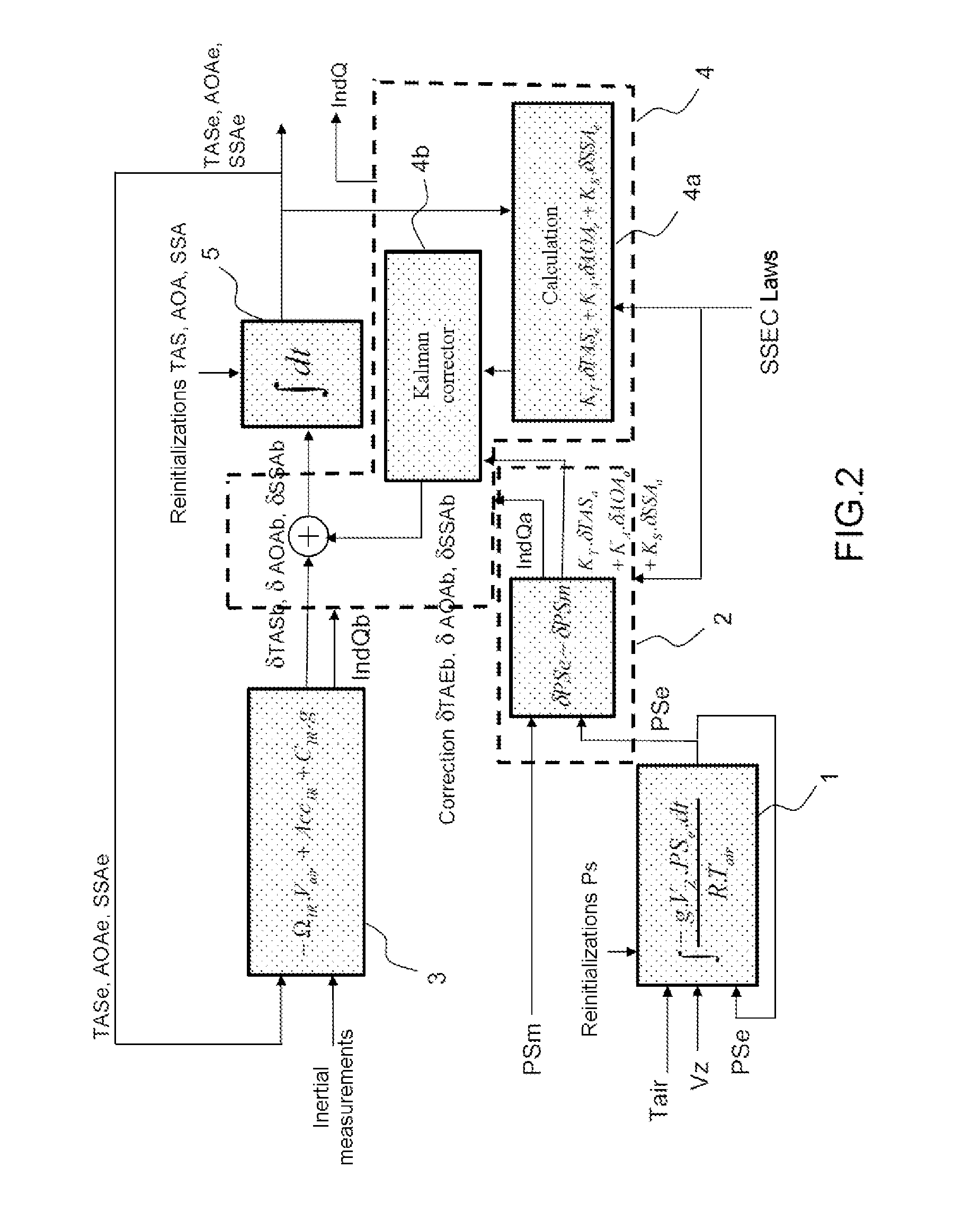Method of estimation of the speed of an aircraft relative to the surrounding air, and associated system
a technology of aircraft speed and airframe, applied in navigation instruments, instruments, transportation and packaging, etc., can solve problems such as failure detection based on hardware redundancy of sensors of the same design, failure detection of common-mode faults, and failure to isolate failed sensors, so as to improve the tolerance of motion
- Summary
- Abstract
- Description
- Claims
- Application Information
AI Technical Summary
Benefits of technology
Problems solved by technology
Method used
Image
Examples
Embodiment Construction
[0052]The method of estimation of the speed of an aircraft relative to the surrounding air, of the angle of attack of the aircraft, and of the angle of sideslip of the aircraft, in a reference frame tied to the aircraft, comprises:[0053]a first step 1 consisting in estimating an estimated static pressure PSe on the basis of measurements of the geographical vertical speed Vzgeo of the aircraft, of measurements of the temperature Tair of the surrounding air, of reinitializations of the estimated static pressure PSe, and of a feedback of the said estimated static pressure PSe, by integration over a vertical path of a hydrostatic equation;[0054]a second step 2 consisting in estimating a linear combination of a first intermediate variation δTASa of the speed of the aircraft relative to the surrounding air, of a first intermediate variation δAOAa of the angle of attack of the aircraft and of a first intermediate variation δSSAa of the angle of sideslip of the aircraft on the basis:[0055]o...
PUM
 Login to View More
Login to View More Abstract
Description
Claims
Application Information
 Login to View More
Login to View More - R&D
- Intellectual Property
- Life Sciences
- Materials
- Tech Scout
- Unparalleled Data Quality
- Higher Quality Content
- 60% Fewer Hallucinations
Browse by: Latest US Patents, China's latest patents, Technical Efficacy Thesaurus, Application Domain, Technology Topic, Popular Technical Reports.
© 2025 PatSnap. All rights reserved.Legal|Privacy policy|Modern Slavery Act Transparency Statement|Sitemap|About US| Contact US: help@patsnap.com



